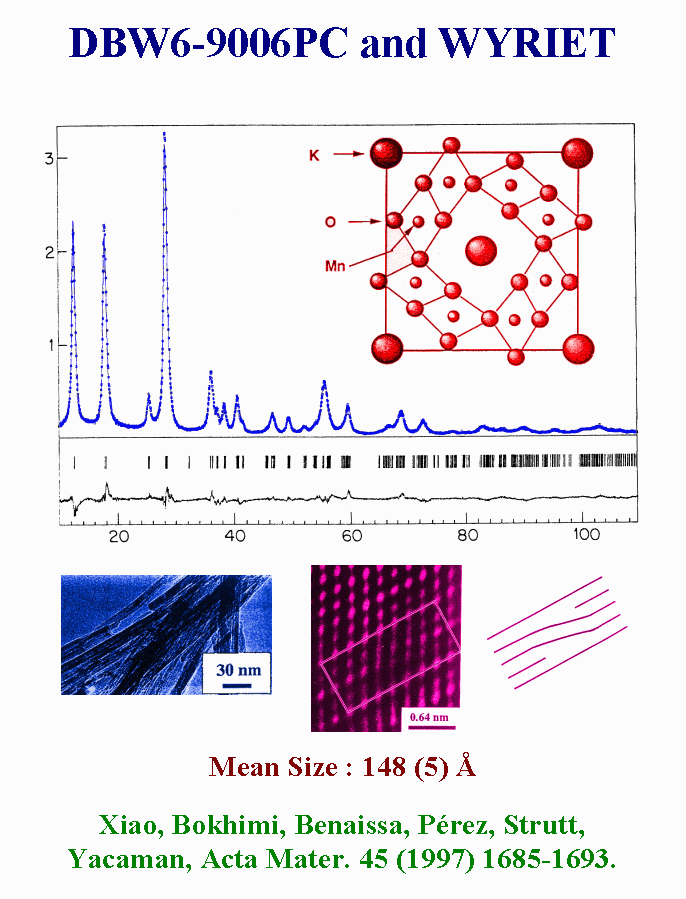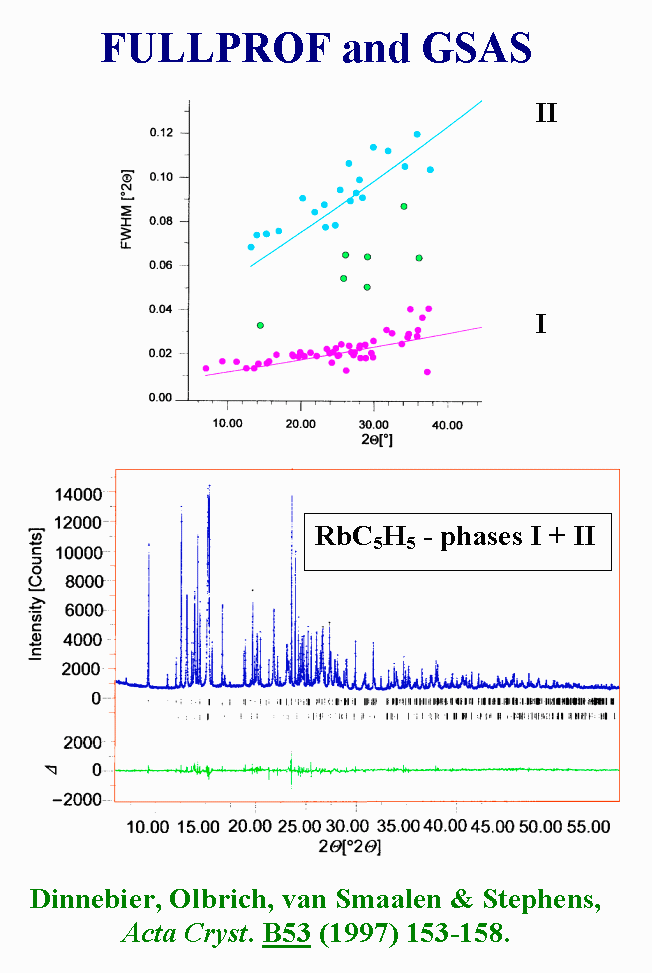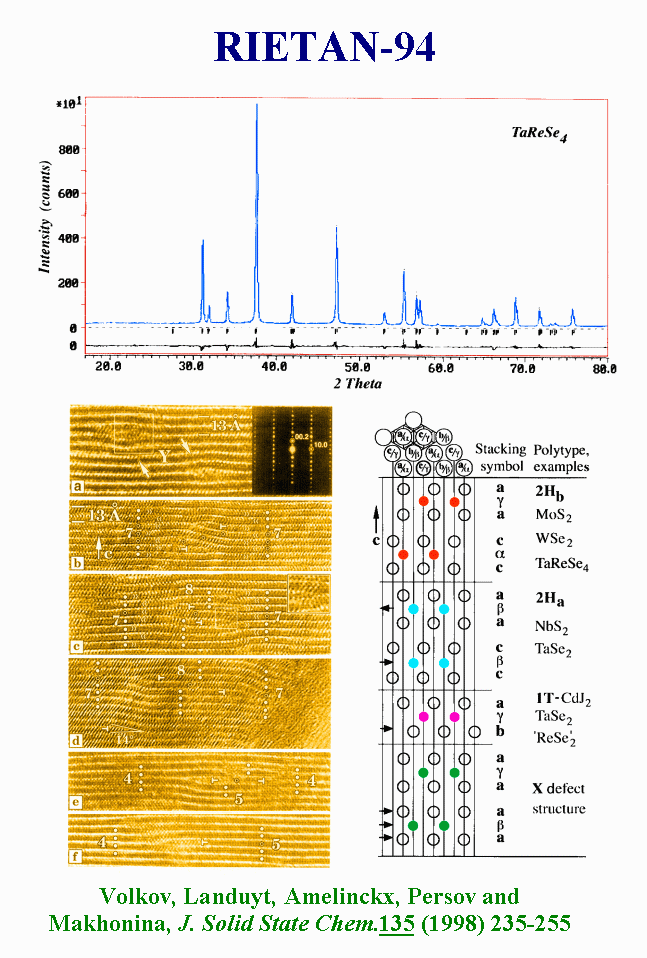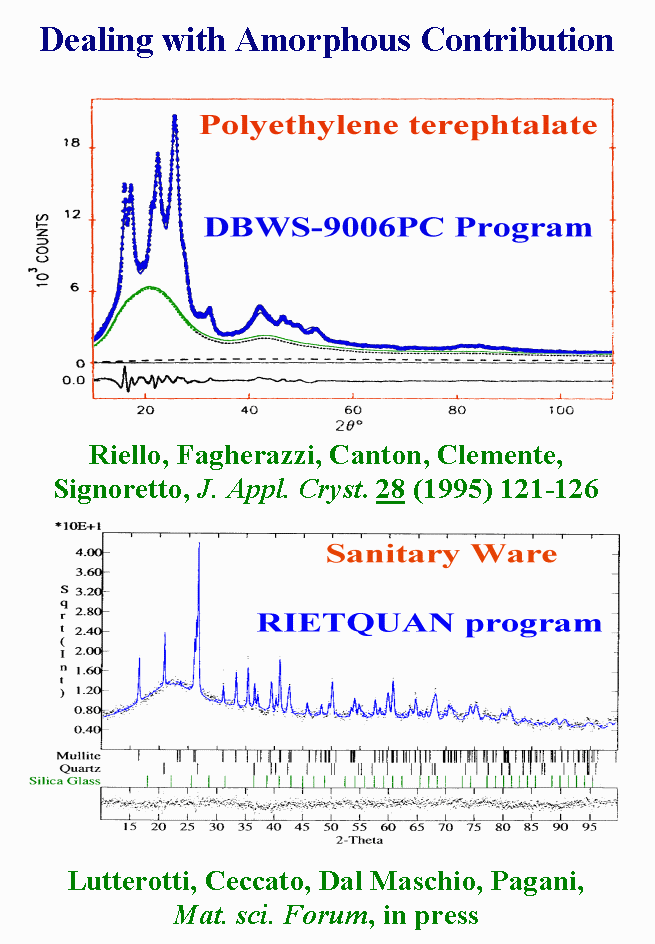REVIEW
of ADVANCES/APPLICATIONS (1995-2000)
Selected applications
(1995-1998)
As long as microstructure
effects are isotropic, they can be accounted for easily in Rietveld refinements.
Recent examples are the particle size characterization of magnesium and
titanium oxides prepared by the sol-gel technique with different hydrolysis,
by using DBW and WYRIET. The Thompsom-Cox-Hasting function allows the consideration
of isotropic Lorentzian effect. Most of the times, anisotropic broadening
is observed but not really treated.

For instance, the Rietveld
refinement of nanostructured hollandite powders could not converged well,
due to such anisotropic effects associated with a fiber axis in the b direction.
An improved fit was obtained from a powder pattern realized with a highly
packed sample, inducing preferred orientation, and reducing the contribution
of the narrowest reflections. A mean size of one-hundred and eight angstroms
was proposed for the thickness of these needles. Dislocations were disclosed,
but, not a word about microstrain can be found in this recent paper.

More amazing is the ab
initio structure determination of two polymorphs of cyclopentadienylrubidium
in a single synchrotron powder pattern. Failing to index the pattern with
a single lattice led to inspection of the peak width, that essentially
fell into two populations, with Full Width at Half Maximum of 0.015°
and 0.07°2q
. With the hypothesis of the presence of two polymorphs, the two data sets
were indexed and the structures were solved by direct methods applied to
structure factors extracted by the Le Bail technique with FULLPROF. The
program package GSAS was used for the final Rietveld refinements, but the
paper did not concluded about microstructure of polymorph II, although
the peak profiles were modelled by the Thompson-Cox-Hastings function.
It was very probably an isotropic size or microstrain effect.

The ability of powder
diffraction to reveal microstructures has been frequently questioned. A
very interesting recent study of a Tantalum-Rhenium-Selenium material,
that is an excellent lubricant, is exemplary. The Rietveld analysis with
the help of the program RIETAN led to a superb fit. High Resolution Electron
Microscopy image analysis revealed the coexistence of rotation twins, a
high density of two-dimensional-defects in the (001) plane and prismatic
cluster defects. So what ? The high density of two-dimensional defect seen
by Electronic Microscopy is not enough for being seen by powder diffraction,
possibly affected by a weak isotropic broadening, accounted for by a classical
Rietveld refinement. In fact, the paper was not clearly explicit about
a possible annealing difference between samples studied by microscopy and
X-ray diffraction.

The Rietveld method was
adapted (in DBWS) for the determination of the degree of crystallinity
in semicrystalline materials. The crystalline peak profiles were modelled
isotropically by pseudo-Voigt for a sample of polyethylene terephtalate.
Background contributions were simultaneously optimized. In this study,
the amorphous part comes from a measurement of a fully amorphous material.
A different approach is possible for amorphous compounds that were modelled
recently by the Rietveld technique, using a mean model, highly microstrained.
An example is the quantitative analysis of silicate glass in ceramic materials
that was realized by the Rietveld method (RIETQUAN), reusing the cristobalite-like
model produced for silica glass by the ARITVE program.





